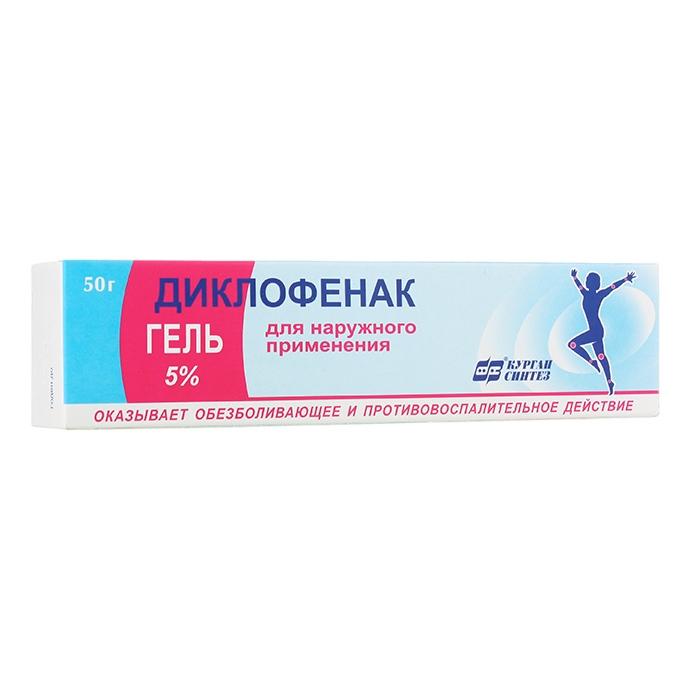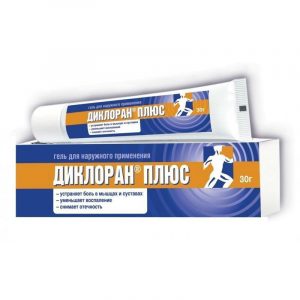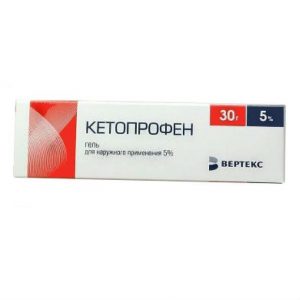Description
Latin name
Diclofenak
Packaging
Tuba 50 g.
Pharmacological action of
Diclofenac is a non-steroidal anti-inflammatory drug (NSAID). It has anti-inflammatory, analgesic and antipyretic effects. It inhibits the COX enzyme in the cascade of arachidonic acid metabolism and disrupts the biosynthesis of prostaglandins.
When used externally, it has anti-inflammatory and analgesic effects. Reduces and relieves pain at the site of ointment application (including joint pain at rest and during movement), reduces morning stiffness and swelling of joints. Helps increase range of motion.
Indications
– inflammatory and degenerative joint diseases (osteochondrosis, osteoarthrosis, periarthropathy)
– soft tissue rheumatism
– traumatic bruises
– sprains, muscle and tendon
.
Contraindications
Children under 6 years.
Special instructions
Diclofenac gel should be avoided on damaged skin surfaces, open wounds, eyes and mucous membranes.
The use of diclofenac in the form of an ointment is possible only as directed by a doctor in the following cases: peptic ulcer of the stomach and duodenum with a history of impaired liver and kidney function, severe disorders of the hematopoietic system, bronchial asthma, rhinitis, polyps of the nasal mucosa allergic reactions in history.
Use caution with the drug concomitantly with other NSAIDs.
Use in pediatrics
If necessary, use the drug in the form of an ointment in children under the age of 6 years and requires the supervision of a doctor.
Effect on the ability to drive a car and control mechanisms
Due to the fact that when using the drug in high doses, side effects such as dizziness and a feeling of fatigue may develop, in some cases the ability to drive a car or other moving objects is impaired. These phenomena are amplified while taking alcohol.
Composition of
1 g of gel contains 50 mg sodium diclofenac
Dosage and administration
Gel in a dose of 2-4 g is applied a thin layer on the skin over the site of inflammation and gently rubbed, the frequency of use is 2-3 times / day.
The maximum daily dose of ointment should not exceed 8 g.
The course of treatment is no more than 14 days. The need for a longer use of the drug is determined by the doctor.
Side effects
Skin rashes, burning, redness are possible at the application site. With prolonged external use of the drug, it is possible to develop systemic side effects from the digestive system, central nervous system, respiratory system, as well as allergic reactions.
Drug interaction
With the simultaneous use of the drug Diclofenac with digoxin, phenytoin or lithium drugs, it is possible to increase the plasma concentrations of these drugs with diuretics and antihypertensive drugs – it is possible to decrease the effect of these drugs with potassium-sparing diuretics – hyperkalemia with acetisenacyloic acid may develop in blood plasma and an increased risk of side effects.
Diclofenac may enhance the toxic effects of cyclosporine on the kidneys.
Diclofenk may cause hypo- or hyperglycemia, therefore, with simultaneous use with hypoglycemic agents, control of the concentration of glucose in the blood is required.
When methotrexate is used within 24 hours before or after taking Diclofenac, an increase in the concentration of methotrexate and an increase in its toxic effect are possible.
With simultaneous use with anticoagulants, regular monitoring of blood coagulation is necessary.
Storage Conditions
In a dry place at a temperature of 8 to 15 ° C. Freezing is not allowed.
Dosage form
gel for outdoor use
Synthesis AKOMP, Russia




